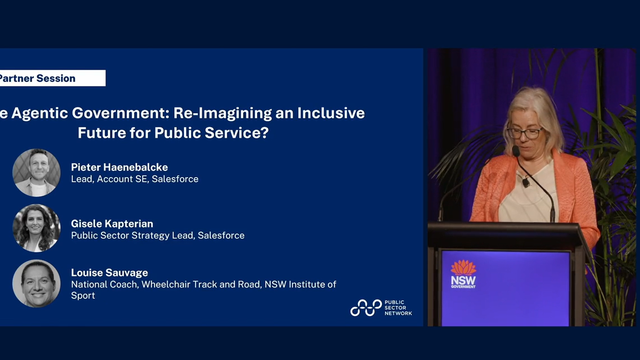

The unveiling of the GX5- five digital government initiatives to boost Australia’s productivity, has brought with it major interest towards well, unsurprisingly, the five initiatives.
- Digital ID
- Digital skills wallet
- Digital 'front door'
- Digital health record
- Digital licences and permits
Now it's easy to dive in right here and say tell me "what are they, what can I do, how do I do it" but don't worry, there will be plenty of information forthcoming over the foreseeable future from Ember Advisors, pioneers of the research and analysis, in partnership with ServiceGen's Co-Founder and Former NSW Minister, Victor Dominello.
In the meantime, perhaps there is a more salient place to start, and that is what government can learn from just how the GX5 breaks down government's greatest problem so well:
Government is in the business of solving BIG problems.
.png)
Start with the Macro.
Government functions at the highest level of society, so it should come as no surprise that trying to separate out a single program, a specific project, or a simple service from its broader impact and contribution to the public good i.e. beyond local levels, will not get you ahead in the windmill of government finance, funding, and procurement.
Centering the case for digital service transformation within macroeconomics and Government's role in GDP provides an accelerated top-down approach, hand in hand with a principled analysis that forces issues to be quantified, at scale. This means faster cut-through, enmeshing the narrative with real, quantifiable problems along with actionable next steps.
This type of analysis empowers Government ready set to make macro-level plays if it recognises the meaning contained within the 3 key growth metrics: population, participation, and productivity.
To keep it short (The Hon Victor Dominello and Ember Advisors have already done a great job of diving into the data and presenting the story of the analytics), for the first lever of growth it's no secret that Western democracies are reliving a familiar pattern of history, seeing lower natural birth rates as we advance higher standards of living. Population declines. The second lever, participation, already sits high at 80% for Australia, leaving the first 2 Ps feeling fully squeezed at least for near term impact. The final garrison, then, to truly tackle the GDP curve and ensure our ability to avoid the inevitable risk to services and standards downfall (if these trends continue) lies in productivity, which- is on the way down...
.png)
Why Race to Productivity?
Digital Government has catapulted into the realm of modern service delivery, and hence productivity, through the proliferation of citizen-first digital products. A standard bridging public sector closer to industry than ever before, dictating digital service transformation on a scale beyond mere policy or regulation.
The Hon Victor Dominello so rightly pointed out that if Government moves, the economy moves, given the sector (in Australia) now participates as much as 27% of the economy as a whole. This is the crux of why it becomes so critical that government seizes its responsibility to not just be efficient, but also its obligation to innovate, move fast, and contribute through said participation.
With productivity boasting the highest untapped potential for growth, digital transformation and information technology teams are now the locksmiths to a future of solving old problems in new ways, where digitalisation is a core enabler of productivity and the downfall of the once mighty pen and paper.
.png)
Defining the Must-Haves
In keeping with the thread on macroeconomics, stay with me a moment to think of long-term investment as an analogy to where government needs to choose its focus.
Not only do good value investors pay close attention to the huge weight and momentum of macro-level trends, but also which assets make the greatest use of that direction. So, knowing the direction or cycle behaviour is one component, but how do you know what reacts to it in the safest or most sure manner?
This is where the idea of efficiency comes in. In simple terms, the relationship between quantifiable risk and reward. And no, this is not just ROI (return on investment).
3 simple principles from Dominello along these lines can take a "nice-to-have" investment to being a "must-have" initiative in the eyes of political play-makers, finance executives, and whole-of government budget makers.
- (Risk) Ready, proven (evidence-based), low probability of failure.
- (Reward) Impact, dollars/ time saved, productivity raised.
But the team adds one more layer to this golden ratio,
- (Real) Programs and projects that produce tactile, customer-facing solutions become the consistent winners.
This is where the Government Services Top Five (GX5) initiatives come from.
Progressively more will be releasing soon regarding the GX5, and no doubt it will not stop with the first 5, but power an entire future of problem-solving.


































